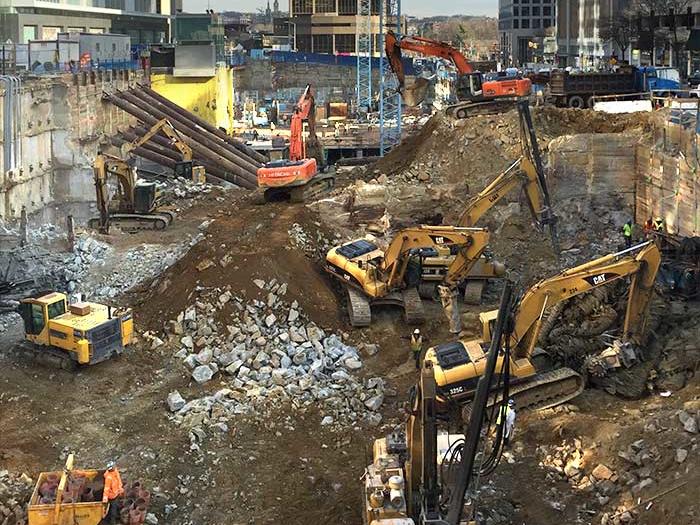GEO-Instruments provide the latest specialist instrumentation to monitor vibration, noise and dust from construction activities like excavations, demolition and pile driving.

Local authorities often regulate the level of nuisance, dictating the maximum exposure levels that a site can produce.
Our automated vibration, dust, and noise level systems provide cost-effective monitoring for exceedances and assure regulatory agencies and neighbours that compliance measures are being taken.
Sensors placed at the site perimeter can continuously log the vibration, noise and dust generated by the site.
GEO-Instruments’ web monitoring solution Quickview then provides environmental data as a continuous real-time display.
Compliance
GEO-Instruments uses trusted and proven industry suppliers to acquire data on site ensuring adherence to the appropriate international standards for the data acquisition methodology and reporting.
Each international project has its own set of limits such as those in Circulaire 86 (France) or BS7385 (UK) that are set on GEO-Instruments’ sensors.
GEO-Instruments uses calibrated triaxial geophones, class 1 sound level meters and PM1-2.5-10 particle monitors to ensure compliance with local standards.
Autonomous and continuous monitoring
All our environmental solutions are designed for long term use on site but can also be deployed for short monitoring projects.
No GEO-Instruments site presence is required. Whether mains or solar powered, our autonomous solutions continuously acquire data on site and, using communication hardware, transmit it at fixed regular intervals.
Some autonomous systems run for up to five years, without any intervention on site other than calibration visits.
As data is sent automatically on Quickview, alerts can be triggered and reports issued automatically.
This can lead to significant time and cost savings whilst keeping the fleet management and deployment on site simple.
Quickview can handle environmental specific analysis such as:
- LAeq interval processing
- Logarithmic averaging for 2 and 10h time intervals
- Cross referencing time synchronised information from all environmental sensors